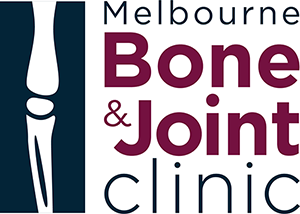Post- Operative Information
Any surgical procedure regardless how small it may be requires special care. Planning ahead will reduce stress and allow family members and friends to offer you the best assistance possible. It is important that you take time to prepare your recovery including being realistic about when you can return to work and your normal routine. A little bit of planning can be very helpful.
Discharge Planning
- Please make sure you have someone to drive you home after your surgery.
- Have someone available to you for at least 24 hours after you arrive home.
- Please don’t forget to take prescriptions for your medication, particularly pain and anti-inflammatory medication.
- You will receive written instructions from the hospital about what to expect after surgery, as well as specific instructions for your care after the operation.
- A post-operative appointment is usually arranged for you and detailed in your hospital paperwork.
Post-operative instructions depends largely on the type of procedure you have had, however the basic general instructions that you should follow after your surgery are as follows:
Pain relief
Take pain relieving and other medications as advised. You would normally be prescribed Endone/Oxycontin/Targin for your pain control. You may also have been advised to take anti-inflammatories for your pain control. It is usually advisable to take them with food. If you develop severe nausea or gastric indigestion, then the anti-inflammatories should be stopped.
Wound care
Your surgical wound is closed with absorbable sutures and dressed with steri-strip dressings. Waterproof dressings are placed on the top. You can de-bulk the dressing 3-4 days after your surgery. You may shower 3-4 days after surgery. Please ensure you do not soak the wounds in a bath or hot tub. Keep the wound clean and dry.
Keep the dressings intact for 2 weeks until your review with your surgeon or GP.
A small amount of reddish-brown drainage is not unusual for 1 to 2 days. If there’s a considerable amount of bleeding or ooze then please call Melbourne Bone and Joint Clinic.
Swelling
Swelling is very common after orthopaedic surgery. It can be largely reduced by resting (keeping the leg elevated). Ice packs can be used liberally for the first week (4-5 times per day) after the surgery, and even later if required. A compression stocking (tubi-grip) can also be helpful.
Crutches
As your operated leg will be sore after surgery, you are advised to use crutches for first 3-4 days post-operatively. You can weight bear as tolerated on the operated leg unless told otherwise by your surgeon.
Physiotherapy
Depending on the type of surgery you have will determine whether post-operative physiotherapy is warranted. You will receive physiotherapy instructions from the hospital.
If physiotherapy is required, exercises in the first week are usually aimed to regain joint motion. Strengthening exercises are initiated later. Generally you will need to see a physiotherapist within 2 weeks of having your surgery. Regular physiotherapy following certain procedures is critical for your good recovery.
Blood Clot Prevention
Blood clots can be serious complications after orthopaedic surgery (eg: hip and knee joint replacement). Blood thinning medication is usually prescribed for the first 4-5 weeks following a joint replacement procedure.
If you have had a hip or knee arthroscopy then usually blood thinning medication is given once only, on the day of surgery.
We advise you to monitor yourself for blood clots. Please call us if you experience:
- Calf pain
- Calf or thigh swelling that does not improve with elevation
- Shortness of breath or chest pain
All patients should try to move (or crutch) around five times daily.
A TED stocking is also advisable.
Driving
Generally you can start driving 1 week after having a knee arthroscopy. If you have undergone a knee reconstruction or joint replacement then it is advisable not to drive for 4-6 weeks after your surgery.
